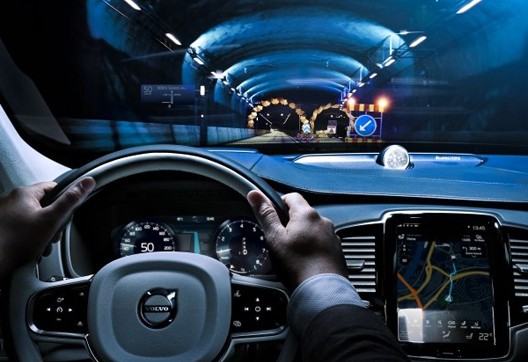 Augmented Reality (AR) and Virtual reality (VR) automotive applications will redefine the driving and ownership experience, turning it into a safer, seamless, and intuitive activity, predicts ABI Research.
Augmented Reality (AR) and Virtual reality (VR) automotive applications will redefine the driving and ownership experience, turning it into a safer, seamless, and intuitive activity, predicts ABI Research.
They believe that AR Heads-Up Displays (HUDs) will allow advanced autonomous operation by “painting” 3D navigation instructions onto road geometry, highlighting moving obstacles like crossing pedestrians, and enhancing driver awareness of and trust in autonomous operation. By 2025, more than 15 million AR HUDs will ship, with more than 11 million to be embedded solutions.
Leading car OEMs exploring AR interfaces include Faraday Future, Ford, Hyundai, JLR, Hyundai, and PSA. Suppliers include Continental and its subsidiary Elektrobit, as well as Denso and WayRay. AR automotive technology extends beyond HUDs, with other use cases including AR manuals, which Audi and Ford recently launched, and “see-through” applications that combine vehicle-to-vehicle (V2V) communications with AR and future 5G low latency broadband connectivity to enhance driver visibility.
Car OEMs like Mercedes-Benz and Volvo, in cooperation with Microsoft/HoloLens, are exploring VR automotive applications through virtual pre-sales experiences to boost online vehicle sales business models. Faraday Future is also using VR, but to design vehicles, saving costs in building prototypes and accelerating time to market.
Despite the advantages of both AR and VR technology, with automotive OEMs expecting augmented reality applications to transform vehicle manufacturing and maintenance processes, AR HUDs run the risk of cognitive overload caused by displaying location-based advertising messages or any other type of secondary, infotainment information.
“It will be critical to use AR sparingly, in a minimalistic way, and only to display relevant, contextual information when needed to improve the driver’s perception of the road environment and reducing response times,” concludes Bonte.
“Automotive OEMs need to address technological challenges before AR HUDs hit the mainstream marke. These include how to capture and interpret road geometry through computing intensive sensor fusion, precise vehicle positioning, laser projection, driver monitoring via inward facing cameras, and designing sophisticated algorithms to generate precise augmentation content in the viewing field of the driver. “t will be critical to use AR sparingly, in a minimalistic way, and only to display relevant, contextual information when needed to improve the driver’s perception of the road environment and reducing response times,” says Dominique Bonte, Managing Director and Vice President at ABI Research.
These findings are from ABI Research’s Augmented and Virtual Reality in Autonomy.
The layout of this article is off… Might want to fix that on your website. Other than that, great story!
It is fixed, now. Sorry about that. It was an html error.